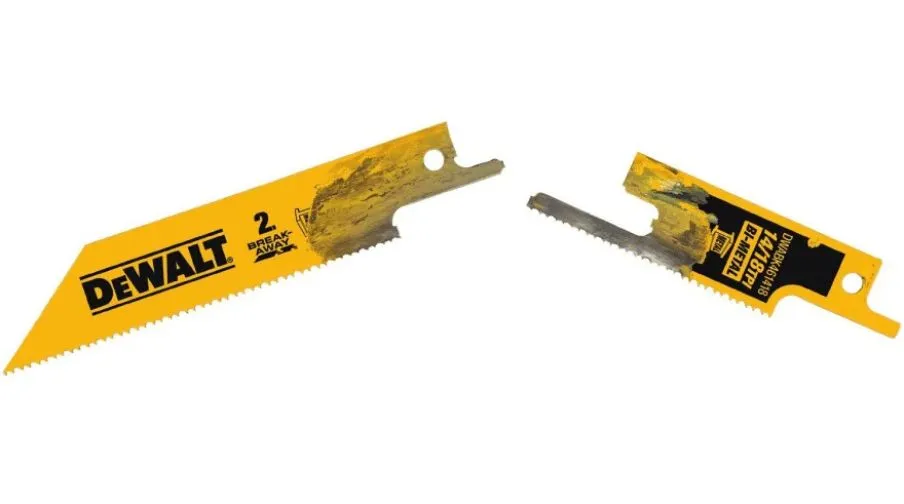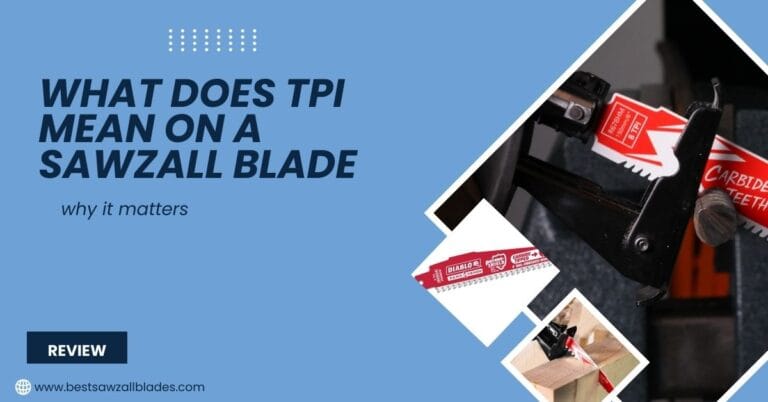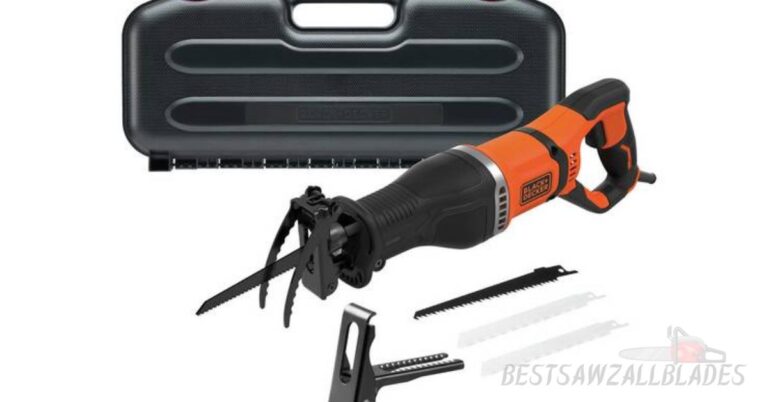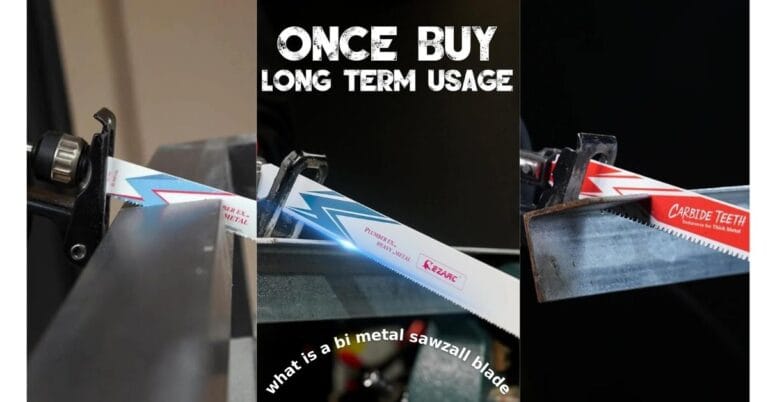Sawzall blades are essential tools in construction, demolition, and metalworking industries, but constantly replacing broken or worn-out blades can get expensive. When Sawzall blades fail, it’s usually because their teeth dull, chip, or the blade snaps under stress. Most blade breakages come down to misuse, poor technique, or using the wrong blade for the job. Here’s a breakdown of why these blades break and how to stop it from happening so often.
Common Reasons Why Sawzall Blades Break
1. Using the Wrong Blade for the Material
Each blade is designed for specific materials. Using a wood blade on metal or a fine-tooth blade on heavy-duty demolition work leads to stress fractures or rapid dulling.
- Example: Using a wood-cutting blade on metal nails causes the teeth to chip off quickly. For instance, if you’re cutting masonry, you might wonder: Can Sawzall blades cut through concrete and stone? The answer is yes, but only with specialized carbide-grit or diamond-grit blades.
- Tip: Match the blade to the job, wood blades for wood, fine TPI metal blades for metal, and carbide or diamond grit blades for masonry.
2. Applying Too Much Force
Pushing the saw too hard increases the risk of bending or binding the blade.
- Tip: Let the saw do the work. Apply light, steady pressure, and allow the reciprocating motion to handle the cutting.
3. Twisting or Bending the Blade
Sawzall blades are designed for straight-line cuts. Twisting or rocking the blade mid-cut weakens its structure.
- Tip: Always cut straight, and avoid applying sideways pressure or angling the saw unnaturally.

4. Hitting Hidden Obstacles
Embedded nails, screws, or metal in wood or drywall can snap a blade unexpectedly.
- Tip: Use a stud finder or metal detector before cutting into walls or floors.
For example, if you’re cutting plaster walls, you may ask, Do I need special plaster Sawzall blades? While general-purpose demolition blades can sometimes work, plaster-specific blades deliver cleaner cuts and last longer.
5. Overheating the Blade
Excess heat softens the blade material, making it brittle and prone to snapping.
- Tip: Allow breaks during cutting and use cutting lubricant on metal to keep the blade cool.
6. Using a Dull or Worn Blade
Dull blades require more force to cut, increasing stress and heat buildup.
- Tip: Inspect blades regularly. Replace them when the teeth are dull or the blade shows wear.
7. Using the Wrong Blade Length
A blade that’s too long may flex too much, while a blade that’s too short can’t support the cut effectively.
- Tip: Use longer blades for thick materials and shorter ones for thin materials to maintain control and reduce bending.
How to Prevent Sawzall Blade Breakage
Use the Right Blade for the Job
Choose a blade specifically designed for the material you’re cutting. This prevents early wear and breakage. For instance, do Sawzall blades work well on fiberglass? Yes, but you’ll need carbide-grit or fine-tooth bi-metal blades to avoid fraying and cracking.
Cut with Proper Technique
Avoid forcing or angling the blade. Maintain a steady hand, and let the blade do the work.
Allow the Blade to Cool
Give your blade breaks during long or heavy cuts. Use cooling oils when working with metal to reduce overheating.
Check the Material Before Cutting
Scan for hidden objects such as nails or wires that can damage the blade unexpectedly.
Replace Dull or Cracked Blades Promptly
Working with worn blades increases stress on both the blade and the tool. Swap them out when they show signs of fatigue.
Choose the Right Blade Length
Pick a blade that suits the thickness of your material. This helps avoid bending, over-flexing, or snapping.
Conclusion
Sawzall blades often break due to incorrect usage, excessive force, overheating, or hitting hidden objects. By choosing the right blade, using proper cutting techniques, and taking care of your equipment, you can significantly extend blade life and improve cutting efficiency.
In short, why using the right blade is efficient and time-saving comes down to smoother cuts, less downtime, and fewer blade replacements. Taking the time to understand how and why blades break not only saves you money but also makes your work safer and more productive.
Frequently Asked Questions
Why do Sawzall blades break so easily?
Blades may break due to excessive pressure, the wrong blade type, overheating, improper cutting angles, or blade fatigue over time
What materials are most likely to cause blade breakage?
Thick metal, embedded nails, or dense materials like concrete and cast iron are common culprits, especially when the wrong blade is used.
Does blade quality affect breakage?
Yes. Higher-quality blades like bi-metal or carbide-tipped options last longer and are less prone to breakage than cheap, low-grade blades.
Can the cutting technique cause blade breakage?
Yes. Higher-quality blades like bi-metal or carbide-tipped options last longer and are less prone to breakage than cheap, low-grade blades.
How does overheating contribute to breakage?
Heat weakens metal, especially at the teeth and neck of the blade. Continuous cutting without cool-down periods leads to fatigue and failure.





